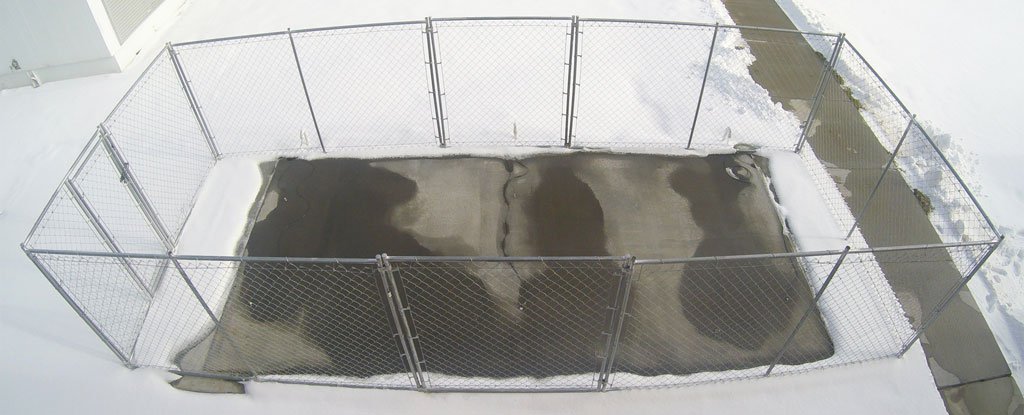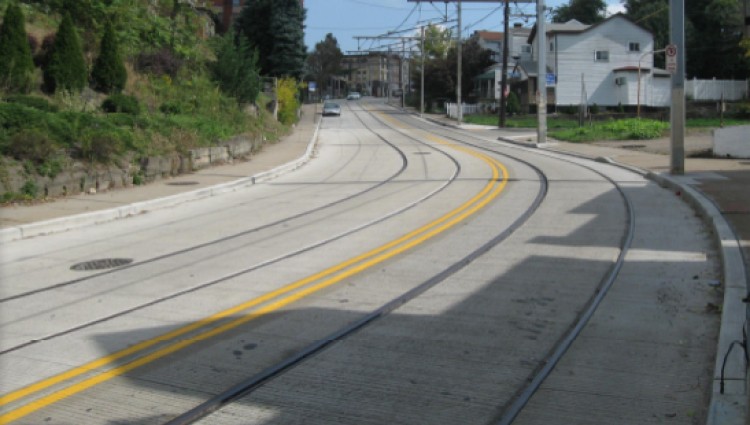Connected and Autonomous Vehicle (CAV) technology is advancing rapidly, but what tech advances are coming to the actual highway? Here are some trends and new developments you could be seeing soon on pavement.
Dynamic electric vehicle charging: charging cars as they drive
Range anxiety, or the concern that an electric vehicle’s battery will not last long enough to reach the destination or the nearest charging station, is a common fear among electric vehicle drivers. While battery technology is progressing, long trips remain a major weakness for electric vehicles. Technology companies are looking to expand electric vehicle capabilities by developing innovative solutions to charging on the go.
Qualcomm Technologies is one company that is using Dynamic Electric Vehicle Charging (DEVC) to solve this problem. In DEVC, coils are embedded in pavement and send power up to a vehicle traveling across it. This allows a vehicle to charge while driving, potentially even exiting a highway with a battery fuller than when it entered the highway. This technology could enable electric vehicles to travel farther between charges than ever before, possibly even eliminating the need for large, heavy batteries, further saving cost and weight.
But even if Qualcomm’s tests are successful, the cost of implementing such a technology is a major hinderance—the price and hassle of tearing up roadways to install inductive coils may not be worth the benefit it gives to passenger vehicles. However, there may be a future for this technology in public transportation, where routes are standardized and vehicles carry more passengers. DEVC could be the next step towards fully-automated fleets of buses and taxis.
Harvesting clean energy from roadways
While many engineers are concerned with the deleterious effects of vehicles on pavement, others are searching for positives: how can we use highway traffic to generate clean energy?
A research team at the University of Texas at San Antonio has been awarded a $1.32 million contract from the Texas Department of Transportation (TxDOT) to develop piezoelectric sensors that can be embedded in roadways and harvest energy. A car passing over one of these piezoelectric sensors creates a voltage, and that voltage can be converted into electricity. By lining an entire roadway with these sensors, the vehicular traffic that passes over the road can generate enough power to be pushed back into the grid, stored, or even light roads at night. Innowattech, an Israeli-based company, is developing a similar technology and has run a successful test section that points to this technology becoming a viable option in the future.
Energy can not only be generated from the pavement, but also from the wind that cars generate as they drive by. Dutch designer Daan Roosegaarde and civil engineering firm Heijmans Infrastructure have partnered to develop a project called “Smart Highways”—concepts to “make highways safer while saving money and energy.” One design concept is to place pinwheels along roads—like mini wind turbines—turning the drafts of air generated by passing cars into energy that can power street lights. In Dundee, Scotland, there is a wind turbine that spins in the wind of passing traffic. Created by a Pakistani entrepreneur, these turbines take advantage of both the high vehicle traffic and windy geographical location to harvest clean energy.
Even if the energy generated from these technologies is minimal at first, any amount of energy harvested can help offset the costs of powering these highways at night—a small, but significant step towards creating renewable highways.
Glow-in-the-dark, dynamic paint
As part of the same Smart Highways project, artist Daan Roosegaarde and Heijmans Infrastructure are also creating dynamic paint for highways that can reduce energy usage and increase safety.
The paint used in this project is photoluminescent, which means it soaks up energy from the sun during the day and uses that energy to light up at night. Glowing lane markings could reduce the amount of traditional street lamps needed to properly light the road, saving energy costs.
This paint would also have temperature-sensitive properties, such as changing color or displaying markings on the road that become visible during poor road conditions. Drivers would be notified of ice or slick surfaces by warnings on the pavement, allowing them to take measures to avoid crashing or hydroplaning. When the conditions subside, the markings would become transparent, returning the pavement surface normal.
Roosegaarde and Heijmans are testing their innovative paint concepts on a 500-meter section in the Netherlands. An artistic and technologically-savvy solution to highway safety, this dynamic paint furthers Roosegarde’s mission “to connect people and technology in artworks that improve daily life in urban environments.”
Drones overhead that monitor highways and predict maintenance
The Ohio Department of Transportation (ODOT) is looking towards an innovative technology to monitor their highways: drones. In collaboration with Ohio State University, ODOT is learning how to use drones to monitor and send traffic data to ODOT’s Traffic Management Center, where measures can be taken to improve traffic flow.
Other countries are utilizing drones for similar purposes as well. The National Highways Authority of India (NHAI) plans to use drones to do surveying for road projects, turning a process that take surveyors months to complete into a task that takes drones a few days. Drones can take pictures of structures, determine topography, and provide information about a project site in detail. They will also be able to predict maintenance, allowing for preemptive repairs and extending the structure’s lifetime and durability.
While highway maintenance drones are still in the research and development phase, the implementation of this technology may prove to reduce time, streamline construction projects, and eliminate the need for tedious manual tasks.
Concrete roads that can de-ice themselves

In cold regions, spreading de-icing chemicals or salt on roads is a necessary ritual during the winter. Such is a tedious but necessary task to prevent ice and snow from creating hazardous conditions for vehicles. But what if de-icing chemicals were no longer necessary? What if roads could de-ice themselves?
Conductive concrete may be the answer. By mixing steel fibers, carbon particles, or other electrically conductive material into concrete, an electrical current can be passed through the slab. During snowstorms, transportation agencies can pass currents through conductive slabs on their roads, causing the slab to act like a heating blanket and melting the snow on top of it. Researchers at the University of Nebraska—Lincoln have tested this technology on a 150-foot bridge near Lincoln, Nebraska with successful results. During 15 major snowstorms, the conductive concrete kept the bridge free of ice for only $250 per storm.
The Federal Aviation Administration (FAA) is interested in using this technology for airports. Embedding anti-icing technology in airport pavements would remove the need for de-icing vehicles or snow plows, thus expediting the de-icing process and reducing vehicle traffic on the tarmac. Developing and installing these conductive slabs is pricey, but could be worth their cost in specialized situations, such as airport tarmacs, hard-to-plow places, or critical areas where excessive snow is a nagging problem.
Making infrastructure more readable for autonomous cars
A challenge to autonomous vehicles is the decaying state of infrastructure. Fading lane markings, difficult-to-read road signs, and poorly-placed signs are all challenges to a computer-based system. To address this, 3M has launched a project called Connected Roads in order to develop low-cost solutions to making infrastructure more readable to autonomous technology. One method of doing so is by changing lane markings to reflect outside the visible spectrum, allowing these markings to be “seen” by autonomous vehicles even in inclement weather. Other changes include installing more reflective road signs and making signs more machine-readable. Making roads more compatible with new technology means updating current infrastructure technology.
The Texas Department of Transportation (TxDOT) has partnered with the Texas A&M Transportation Institute (TTI) to research the idea of embedding road signs with machine-readable code for autonomous vehicles. These road signs would appear the same to the human eye, but would contain code with additional information that autonomous cars could read, such as providing the date of sign installation or acting as wrong-way detection. This technology would also be able to inform DOTs if it needs to be repaired or replaced, helping DOTs maintain the quality of their highway signage.
An important step to preparing roads for autonomous vehicles is ensuring that the existing infrastructure can be easily interpreted not only by human drivers but by autonomous ones as well. Projects like 3M’s or TxDOT’s and TTI’s provide concrete solutions for communicating useful information to cars without disrupting the information that humans are used to.
Repurposing non-recyclable plastic waste in asphalt roads
In the United States, the most recycled material isn’t aluminum, glass, or paper—it’s asphalt. Over 70 million tons of asphalt are torn up from old roads and processed to be reused in new roads each year. Around the world, asphalt roads are recycled at the end of their service life and mixed with new asphalt. The recycling of this popular material may hold the key to another recycling problem: plastic waste sitting in landfills.
MacRebur, a UK-based firm, is on a mission to “help solve the waste plastic epidemic and the poor quality of roads we drive on around the world today.” They have created an innovative road material design, mixing non-recyclable waste plastic with asphalt. Numerous roads around the world have been built using this design, and MacRebur claims that their mix is not only ecofriendly but produces longer-lasting roads.
This technology is also making its way to India. Chemistry professor Rajagopalan Vasudevan has developed an asphalt mix that contains finely shredded plastic waste, similar in concept to MacRebur’s. He has helped build hundreds of thousands of kilometers of roads in over 11 states in India and also argues that his roads are more robust than other roads without plastic.
These plastic roads must stand the test of time before they are trusted as viable plastic repurposing and road design alternatives. But if using waste plastics in asphalt is proven to be effective, it could be a significant contribution by the transportation industry towards environmental sustainability.




